Today, on the BWL Author’s blog, I write about how my novels got their designs https://bwlauthors.blogspot.com/
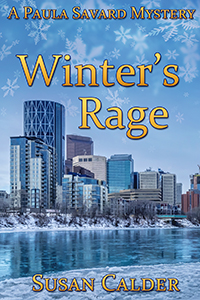

Today, on the BWL Author’s blog, I write about how my novels got their designs https://bwlauthors.blogspot.com/
Last summer I noticed a cloudiness in my left eye. I thought it might be due to cataracts, which run on both sides of my family. My husband had them a few years ago, with similar symptoms. When my eye doctor confirmed the problem in both eyes, she said that she likes referring severely near-sighted people for cataract surgery. In most cases, the treatment significantly improves their vision and they’ll need thinner eyeglasses, and sometimes, none at all.
Cataracts are one thing that make me glad I don’t live in the past. My relatives who had the surgery in the 1970s were hospitalized for a week, and afterward they had to wear Coke-bottle-bottom eyeglasses. My grandmother was an early recipient of lens implants in the 1980s. They worked well for her after her month of bed rest. Today, recovery is quick–minor restrictions like no swimming for a week.

After cataract surgery, I hope to snorkel without prescription googles. I used to think cataract surgery was a 20th century invention and people who lived earlier simply went blind. But it goes back to the fifth century BC. The treatment then involved striking the eye with a blunt object, dislodging the eye fluid and restoring limited vision. Centuries later the surgery evolved to inserting a needle into the eye and extracting the cataract. According to my cataract information sheet, today’s treatment involves inserting a fine probe into the eye, removing the cataract and then injecting a lens implant.

The year after my husband’s cataract surgery, we took a holiday in northern France. On the way to Paris, we stopped at Giverny, the former home of impressionist painter, Claude Monet. We were intrigued to learn that Monet had cataracts for almost twenty years before they were treated with surgery. Knowing this added to our appreciation of Monet’s works painted during that time. His failing vision led him to use larger brushstrokes. He saw some colours differently with cataracts. Fog increasingly shrouded his view of everything. Post-surgery he destroyed or redid some of the paintings he created when he saw his world through cataracts.

Water Lilies by Claude Monet, painted in 1920, three years before his cataract surgery, hangs in The National Gallery, London Due to my high astigmatism, my eye surgeon recommended I upgrade to a lens that corrects this problem. I further upgraded to a multifocal lens that handles distance, intermediate (computer) and reading vision. The standard lens sets vision to only one level, making glasses necessary.
It’s now two weeks after surgery on my second eye and my vision isn’t perfect. My right eye is 20/20 for distance, but the left works much better for reading. The left also sees halos and glare when I watch TV. They say this should diminish in time and my eyes will take 4-6 weeks to settle. I see well for most activities, which is a huge change after wearing glasses since I was ten years old. I’m still getting used to my naked face and find myself trying to remove or put on imaginary glasses. I wear sunglasses on windy days so grit doesn’t blow into my eyes. But it feels great, if a little strange, to wake up every morning and see the world clearly.

Monet’s garden, Giverny, France
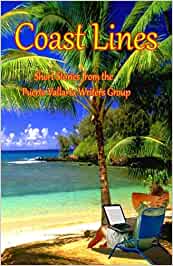
Amazon has finally decided to recognize Canada as the originator of paperback books. This means BWL no longer has to publish my books on Amazon.com with the higher USA conversation prices. BWL can now publish the books on Amazon.ca and price them to the Canadian marketplace. My books will still be available in the USA and worldwide.
Here’s a page of books on Amazon.ca with writings by Susan Calder and more. Amazon.ca : Susan Calder I’m not the Susan Calder who wrote the book on microwave cooking, although her name prompted me to buy her book years ago. The page doesn’t include e-books for A Deadly Fall and To Catch a Fox, but you can find the kindle formats by clicking on the titles. I’m pleased to see a couple of short story collections that include my writing: Passport to Murder, Coast Lines and Coast Lines 2.
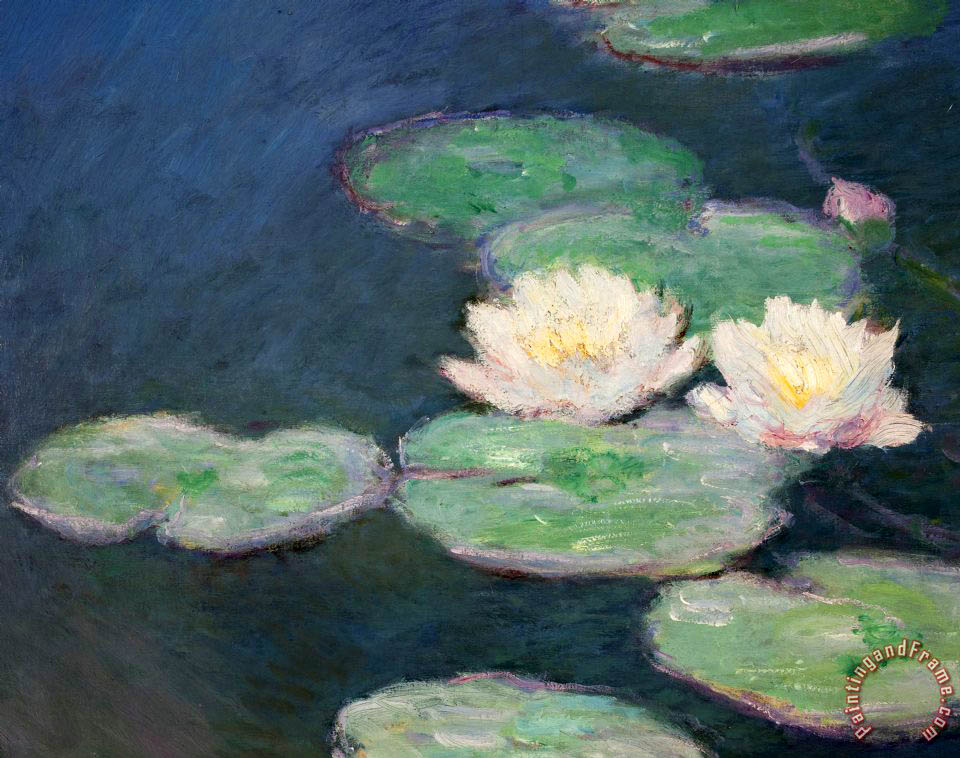
One of my projects this spring has been cataract surgery. Today, I write about my own and painter Claude Monet’s experiences with this on the BWL author blog https://bwlauthors.blogspot.com/
During this past winter of staying home, I looked forward to a spring getaway with my husband Will and our son Matt. With travel outside of Canada and our province of Alberta restricted this month, we booked a four-night stay in Canmore, an hour a half drive from our Calgary home and just outside the entrance to Banff National Park.
Easter Monday, we drove directly to Banff and ate our turkey sandwiches on a bench by the Bow River. Despite the sunshine, a breeze made the 3 degrees Celsius (37.4 F) temperature cool for sitting out. We soon warmed up on our hike up Tunnel Mountain. Sections of mud and ice typical of early spring made us glad we’d brought our cleats. At the top, we rested on Muskoka chairs half buried in snow and enjoyed the panoramic views of Banff.


Day two of our trip was sunny and warmer. Will and Matt went skiing at Lake Louise, while I spent a summer-like day in Canmore. In the morning, I checked out the local stores and bought a salad and bread for our lasagna dinner. My afternoon walk followed part of the town’s extensive trail network. The rest of the day I read on our balcony, looking out at the Three Sisters and HaLing mountain peaks. Will and Matt had a perfect ski day — sunny, warm, uncrowded, fresh snow from a weekend snowfall. I didn’t envy them, since I’d preferred my lazy time.

Balcony view from our AirBnb apartment

Lake Louise ski hill
The weather turned cooler on our third day and cloud mingled with sun. We stayed close to Canmore and hiked up to Grassi Lakes, an icy trail we couldn’t have managed without cleats. At the top, we were surprised and pleased to find the ice on the lakes had melted to reveal their clear, green colour. After lunch, we walked the riverside portion of the trail I’d done the previous day and continued farther. We talked about returning later this spring with our bikes to explore the whole Canmore pathway network.

Grassi Lake

Former railway bridge on Canmore path – Will didn’t hold the camera straight
Rain blew in that evening and we woke up to a snow-draped town. Matt’s weather app forecast a relatively nice day at Lake Louise with only 17 percent chance of snow. We drove west. As we approached the village of Lake Louise, we hit steady snow and low cloud that made the mountains almost invisible. Hoping the sky would clear later, we opted for a morning hike through a wooded area. The snow continued, but we drove up to the famous lake anyway. Everything was so white, we could hardly tell where the lake ended and the mountains began. We gave up on a viewpoint hike and walked along the lakeshore. When we returned, blue sky started to appear and we left the lake in sunshine.
Winter conditions at Lake Louise, summer on our Canmore balcony, in-between temperatures the rest of the time. That’s spring in Alberta.

Lake Louise village trail

Will and Matt on our Canmore balcony
Like millions of people in North America and Britain, I watched the recent Oprah Winfrey interview with Meghan Markle and Prince Harry. When the couple married almost three years ago, my husband and I happened to be in the UK on vacation. We visited the church at Windsor Castle, where the wedding would take place and watched the preparations underway. On May 19, 2018, the day of the event, we took a train from the Lake District to Edinburgh. At the train station, we watched a woman set up a festive table with afternoon tea for sale.
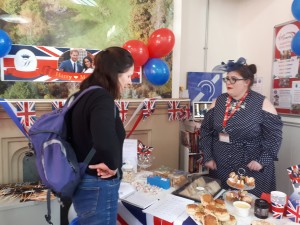
Meghan and Harry’s honeymoon with the press and public deteriorated quickly after that, as did their relationships with people in the royal family. A year ago they gave up their duties as senior royals and moved to Canada, a Commonwealth nation where Meghan had lived and worked as an actress. When the UK and Canada refused to pay for their long-term security, they settled in California with plans to pursue non-regal ventures. In their interview with Oprah, they said that unfair and hurtful treatment by members of the royal family, the palace establishment and the British media forced them to take these steps.
Everyone I know, including me, has watched the Netflix series The Crown, which chronicles the life of Queen Elizabeth II from girlhood to recent times. A theme I take from the series is that the personal lives of royal family members come second to protecting and preserving the institution of The Crown. In the Oprah interview, Harry said that all of his relatives are trapped in their royal roles. The Netflix show suggested the Queen might have been happier living a simple life in the countryside with her horses and dogs. But then she wouldn’t have fame, fortune and a place in history. Many would choose the trap.
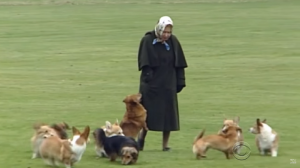
The media loves drama. It sells newspapers and gets people to watch shows like the “bombshell” and “explosive” Oprah interview. The UK tabloids exploited and maybe created the Meghan vs Kate conflict. This narrative serves The Crown if Kate generally comes across better, since she’s a future queen. Harry told Oprah that the royal family needs positive coverage by the press. The monarchy isn’t secure forever and the country has many anti-royalists. While the Queen is beloved, her successor Prince Charles isn’t. But Will and Kate look on track to replacing the Queen in people’s hearts. They also have three children ahead of Harry in the line of succession. Harry’s drop to the # 6 spot makes him less important to The Crown. That’s why their son wasn’t made a prince and the palace made little effort to protect Meghan from media criticism and lies, as she said in the Oprah interview.

Both Harry and Meghan made a point of telling Oprah they still get along well with the Queen. Harry followed up the interview by making it clear that the Queen and Prince Philip weren’t the unnamed royals who made racist remarks that were arguably the interview’s biggest bombshell revelation. This shows that the young couple’s intentions haven’t strayed completely away from their prime roles as members of the royal family—to protect and preserve the person who embodies The Crown.
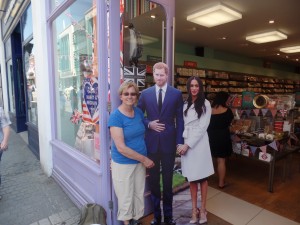
On today’s BWL author blog I offer my 2 pence on the Meghan and Harry’s infamous interview with Oprah Winfrey. The couple has come a long way since their wedding almost three years ago at Windsor Castle.
When I attend Zoom meetings with other writers, someone always asks if we’ll write about the current pandemic in our fiction. Invariably a couple of people reply they’re so so tired of COVID-19 that when it’s over they won’t want to write or read anything about it. They hope to move on and write stories that imagine the pandemic hadn’t happened.
Given publishing timelines, most novels published the past year were written before the authors knew about COVID-19 or anticipated its enormous impact. This winter I’ve read a few novels set in our contemporary time and have had no trouble reading about people meeting in restaurants, attending parties and generally living like it’s 2019. The only novel that jarred me was one that specified the year was 2020 and mentioned COVID-19 as a past event. I assume the author added this topical reference on the assumption we’d be done with the pandemic by the book’s fall release. My conclusion is you can write a contemporary novel that ignores the coronavirus, but it’s best to either keep the year vague or indicate that it’s set before March 2020, when only someone living a cave would have missed the great changes to our society.
Other writers in my Zoom meetings expect they will explore the pandemic in their fiction, as they would do with anything that affects them profoundly. Some have already written short stories and poems about it. COVID-19 can be central to a story or simply part of the landscape. Your protagonist might be working from home, instead of going to her office. She might engage with friends and family on Zoom, in addition to the usual phone calls, letters, emails and text messages. When she does meet someone in person, his mask–or lack of mask–becomes a descriptive detail like his hairstyle or baseball cap. She might suddenly realize she’s standing too close to him and leap backwards. The pandemic could provide our stories with fresh descriptions, until they become overdone because everyone is writing about COVID-19. There’s a risk of saturating the market with too many coronavirus stories for readers who will have largely put the pandemic behind them.
Writers can avoid dealing with all this by setting their stories after COVID-19, which, hopefully, won’t be far in the future. But, in the post-pandemic world people won’t necessarily be partying like it’s 2019. How soon will it be before we’re comfortable shaking hands with strangers and hugging acquaintances we meet? Will we stop doing these things for good to avoid catching all kinds of viruses? The common cold can drag someone down for weeks. The regular flu can kill. Is a handshake worth the risk? For these same reasons, will stores maintain some of their protective measures–plexiglass at the checkout counters, socially distanced lineups, one way aisles and hand sanitizer stations? Will buffet dinners be a thing of the past? Will airlines require passengers to keep wearing masks on planes or will most passengers choose to to wear them to avoid sharing diseases? Writers will need to know these details if they send their character to an exotic location or to the grocery store.
This makes me think that writers of realistic contemporary fiction will have to deal with the pandemic, whether they want to or not. I suspect that when we’re over COVID-fatigue most writers will find themselves processing the experience in their memories and work. Already, I feel a bit of nostalgia for the early days of COVID when few people wore masks in public and grocery store shelves were often picked clean of canned goods, frozen vegetables, milk, eggs and, of course toilet paper. One store I went into had a clerk guarding a stack of toilet paper to make sure no hoarders grabbed an extra package. That’s a detail future readers of COVID-19 stories will find bizarre and informative about our pandemic.
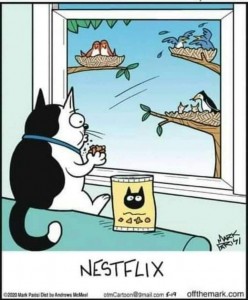
The pandemic is still at the top of most of our minds, but when it is finally over will writers want to put it behind them or explore it in their stories? I ask this question on today’s BWL Author blog.